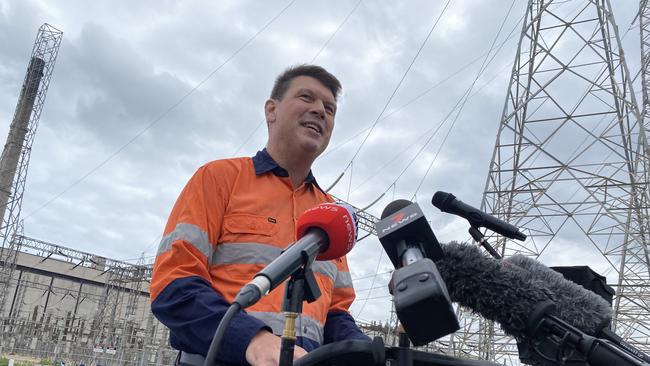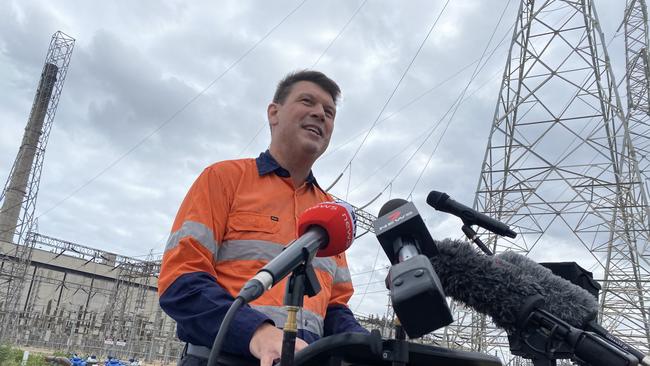Green makeover: AGL to split retail and generation arms
AGL’s planned split will mirror the schism in the national energy market, with a green-tinged retail arm and a generation giant dominated by coal.

AGL Energy will look to win support from investors to create two ASX-listed companies through a demerger after splitting its retail and supply arms to form a green electricity retailer and generation giant dominated by coal power.
Australia’s oldest utility has seen its earnings whiplashed by low wholesale electricity prices and government intervention on top of a backlash by investors over exposure to its polluting coal plants.
Chief executive Brett Redman plans to divide the company into a zero-carbon retail business dubbed New AGL and a generation business — including its coal plants Loy Yang A and Bayswater — in a separate vehicle known as PrimeCo.
“I’m OK with signalling a demerger, which will result in two ASX-listed businesses, is a live option that we’ll be discussing with shareholders next,” Mr Redman said.
“We want to take on board the feedback from what we presented today before we get into the next level of detail which will include capital structure.”
The new AGL business will provide electricity, gas, internet and mobile services to 30 per cent of households and plans to target full carbon neutrality to chase a higher valuation as a green retailer.
PrimeCo will be the nation’s largest generator, accounting for 20 per cent of supply in the national electricity market and retaining the nation’s biggest fleet of coal output.
Investors have been using their power to hold companies to account on climate change and improve their environmental performance, which has played a part in the restructure.
“We always talk to investors about where the market is going and the impact on our business. In recent conversations with investors, that focus has turned to what we see as accelerating change in our industry and by implication change for our company,” Mr Redman said.

“We have spent quite a bit of time as to what is the impact on our business as the market goes through faster change and how do we think about responding. What we put out today is responsible and responsive to what is happening in the market around us.”
AGL has been reviewing its business model and has hinted at potential changes to its retail and generation arms as declines in wholesale prices pressure its core electricity earnings.
It will start a process of engaging with shareholders, regulators, government and staff with plans to be determined by the end of June.
The potential demerger was met with a mixed response by investors and analysts. AGL shares fell 3.5 per cent to $9.81 and there were questions whether the move may be masking a fundamental dent to earnings in the next few years.
“Let’s be clear, this isn’t a message from the company about latent value being unlocked through these actions. It appears to be about keeping the lights on if you’ll excuse the pun,” MST Marquee analyst Mark Samter said.
AGL earnings are expected to fall by $125m in the 2022 financial year according to market consensus, which suggests a fall of just $4 a megawatt hour in electricity prices compared with an actual number potentially five times that level.
“That number feels set to be closer to $20 a megawatt hour, than $4 a megawatt hour, which would be a about a $600m earnings fall with of course those headwinds continuing to get worse according to AGL today,” Mr Samter said.
The utility is being battered by a storm of low wholesale electricity prices as cheap renewables continue to flood into the market, while moves by state and federal governments to underwrite new generation have contributed to a tough outlook for the company.
AGL had to act given the headwinds hitting the business, fund manager Vertium Asset Management said, with its shares nearly halving in the past nine months. “They pretty much had to do the split given what the government is doing to the sector,” Vertium portfolio manager Jason Teh said. “You look at the share price in terms of shareholder returns. Something had to be done.”
Mr Redman said he faced a difficult choice on leadership once the company was split.
Asked whether he planned to lead either New AGL or PrimeCo, Mr Redman told The Australian: “That’s going to be a very hard choice when I come to it. It’s a little like being asked to choose between your children.
“Today I’m the CEO of all AGL and that will continue for some time to come. If we go down the path of separating the two businesses, I’m going to have to choose and it’s not a choice I’m looking forward to because I think they’re both great businesses.”
AGL Energy plans to keep its fast-start gas, hydro and battery supplies in New AGL while its long-life coal, wind and gas generation will be housed in PrimeCo.
On the consumer side, AGL will focus on increasing the number of services it offers to customers, initially driven by internet and mobile and later this decade by solar, batteries and electric vehicles.
PrimeCo will focus on three industrial energy hubs: Macquarie in NSW, including its Bayswater coal plant; Loy Yang A in Victoria; and Torrens Island in South Australia, where it runs the nation’s largest gas-fired power station.
A portfolio of wind farms including 1600MW of new development options will also be included in PrimeCo.
It is increasingly shifting its investment focus to clean energy despite owning some of the nation’s largest coal plants.
It has laid out a 850MW battery storage target by 2024 including plans to build a 250MW battery at South Australia’s Torrens Island.





